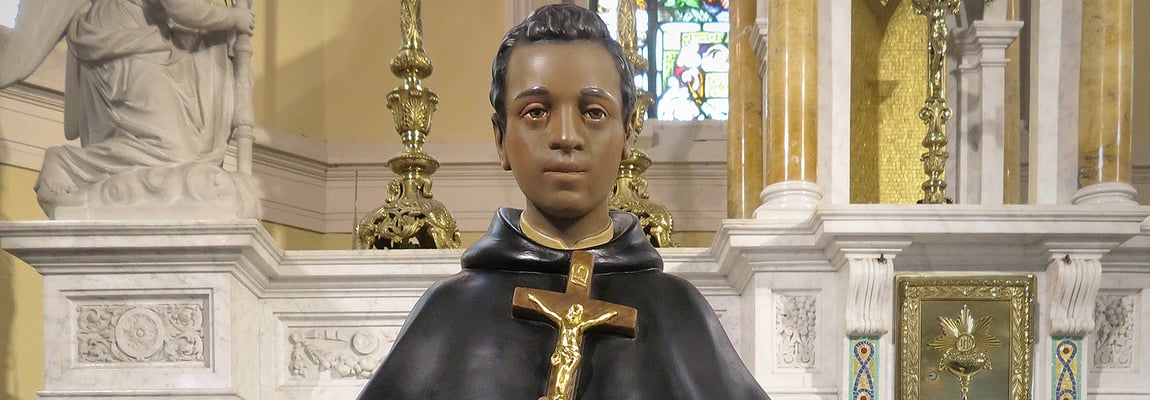
A platform that encourages healthy conversation, spiritual support, growth and fellowship

NOLACatholic Parenting Podcast
A natural progression of our weekly column in the Clarion Herald and blog

The best in Catholic news and inspiration - wherever you are!
Happy Feast Day, St. Martin de Porres!
-

Above: St. Martin de Porres is among the saints depicted in statue form inside St. John the Baptist Church in Edgard. (Photo by Christine Bordelon, Clarion Herald)
St. Martin de Porres was born in 1579 in Lima, Peru, the son of Ana Velásquez, a freed slave of African and Native American descent, and Don Juan de Porres, a Spanish nobleman.
Because Martin and his sister Juana were of mixed race and their parents weren’t married, they were abandoned by their father and raised by their mother in poverty.
Young Martin’s intelligence led him to be taken on as apprentice barber, where he learned not only how to cut hair and shave beards but also picked up medical skills.
At age 15, Martin felt a vocational calling as a Dominican brother at Lima’s Convent of the Holy Rosary. At that time, those of African and Native American descent were not permitted to become full members of religious orders. After eight years of tireless service in the convent’s kitchen, laundry, infirmary and as a barber, Martin was finally allowed to profess his vows as a Dominican lay brother.
In addition to caring for his fellow religious brothers and priests in the convent’s infirmary, Martin also healed people outside the convent walls, never accepting money from the poor. He was committed to feeding the hungry and was miraculously able to multiply the modest alms he would raise to feed more than 100 people each day.
Many miracles were attributed to Brother Martin, including levitation (rising off the ground), bilocation (being located in two places at the same time) and instantaneous healings. Brother Martin also founded a residence for Lima’s orphans and abandoned children. He died in 1639 in Lima.
St. Martin de Porres was canonized in 1962 by Pope John XXIII, becoming the first black saint of the Americas. He is the patron saint of persons of mixed race, barbers, innkeepers, public health workers and those seeking racial harmony.
In works of art, St. Martin is typically depicted in his Dominican lay habit, often holding a broom to represent the dignity in doing even menial tasks. Because he also was known for his ability to communicate with animals, sometimes he is shown with various animals eating at his feet from a common dish.




